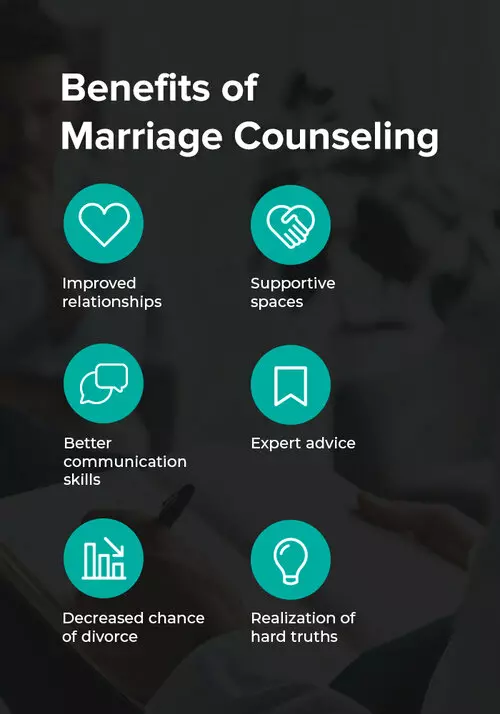Aim Point Counseling for Beginners
Aim Point Counseling for Beginners
Blog Article
The Ultimate Guide To Aim Point Counseling
Table of ContentsThings about Aim Point CounselingHow Aim Point Counseling can Save You Time, Stress, and Money.The Buzz on Aim Point CounselingThe Main Principles Of Aim Point Counseling Aim Point Counseling Can Be Fun For AnyoneNot known Incorrect Statements About Aim Point Counseling
The longitudinal style involves a pre-treatment survey and 2 follow-up studies at 3- and 12-months post-intervention. The research is embeded in 8 Relationships Australia Victoria centres, across urbane, external residential areas, and regional/rural sites. Relationships Australia, a non-government organisation, is the biggest service provider of pair counselling and connection services in Australia.
In Australia, the mean length of marriage before splitting up is 8.8 years, and approximately half of all divorces include pairs with kids [1] These high prices of partnership failure have been continually related to adverse health and wellness repercussions for both grownups and kids complying with divorce/separation. These consist of isolation from support networks, and lowered earnings and requirement of living for both adults and youngsters [3], dilemmas of loyalty over youngsters for males, and depression and loss of identity for women [4,5]
An Unbiased View of Aim Point Counseling
Longitudinal researches likewise suggest that youngsters of divorce have a greater incidence of psychological conditions, alcohol and drug use, and risky sexual practices [7] Although the impacts of divorce and splitting up can be harmful, study indicates that high partnership disharmony in undamaged couples is additionally likely to have adverse results.
Variables that affect the results of these services need detailed examination. Study to date has actually determined both couple and individual factors that may add to connection dissonance. These include connection satisfaction and commitment at the pair degree, and depression at the individual degree. Durable research study to examine relationship-enhancing interventions in the neighborhood are scarce.
The Buzz on Aim Point Counseling
Partnership fulfillment has been one of the most common end result variable determined in greater than 200 assessments of pair therapy [11,12] Researches have actually discovered substantial enhancements in partnership complete satisfaction from pre- to post-treatment [13,14] and throughout one to two years adhering to counselling [15] In these research studies, partnership contentment was most frequently evaluated using the Dyadic Change Scale (DAS) [16] Therefore, while a lot of researches indicate enhancements in partnership complete satisfaction adhering to pair counselling, they are limited by the examples and actions used, mostly temporary follow-up timespan, and evaluations that do not account for the dyadic nature of couple data. Partnership dedication, based on steps such as the Commitment Inventory (CI) [19], is an additional generally explored partnership result.
To summarise, study shows that couple-specific variables as well as individual aspects might forecast the outcomes of couple counselling and partnership solutions. The causal direction of these partnerships, nonetheless, is less clear. These monitorings are essential, since, to warrant and direct the application of partnership services such as pair counselling, empirical proof must check out both the outcomes of connection solutions and the factors that anticipate effective treatment.
Consequently, there is a growing agreement that efficacy research studies need to be matched by performance research to best notify clinical practice [ 29] The restricted performance study that exists to day recommends that pair counselling can enhance end results such as relationship satisfaction [33,43], communication skills and general wellness [44], at the very least in some European nations.

We presently know little concerning the profiles of pairs that seek connection education compared to those that seek connection counselling, or the results of these programs. However, anecdotal proof recommends that there may be significant distress amongst a minimum of some pairs looking for relationship education and learning. Partnership education programs differ from couple coaching as they are normally very structured, conducted in groups, and concentrate on a mixture of four components; understanding, responses, cognitive change, and skills training [45]
The Only Guide to Aim Point Counseling
Comments entails participants finishing surveys concerning their relationship (e.g. actions of interpersonal problems), and obtaining information on what he said their ratings show. Cognitive-behavioural methods advertise changing cognitions to promote favorable partnerships.
These meta-analyses highlight limitations in the current literature on connection education and learning. This example profile may not represent clients who normally offer for partnership education and learning.
Our Aim Point Counseling PDFs

Really little research has taken a look at the relative advantages of pair counselling and relationship education programs. As clients are likely to self-select right into these service types, it is not clear whether characteristic connection distress accounts present to every service type, or certainly whether there is an interaction between presenting profile, solution kind and end result.
(https://sandbox.zenodo.org/records/177803)
Thus, we have actually included a 12-month follow-up to evaluate longer-term fads and impacts. The study makes use of a variety of standard result steps since some previous examinations have been criticised for their absence of standardised analysis [50] Finally, using statistical evaluations that assume self-reliance of information, such as t-tests, or ANOVAs, has been prevalent in previous research studies [ 44,49]
We recommend to use multi-level analytical modelling procedures that manage for the inter-dependence of pair data to examine any kind of treatment impacts. The specific objectives of the ECC research study are to: 1. Map accounts of clients seeking area agency-based couple coaching vs. relationship improvement programs in regards to socio-demographic and connection indicators (such as relationship fulfillment, partnership commitment, interpersonal issues, and factors for participating in), along with health (such as depression, general wellness) and health and wellness service use (eg.
Identify whether couple therapy and connection education solutions improve 3- and twelve-month results for relationship contentment, commitment, and clinical depression, making use of analytical analyses suitable to pair data. marriage counseling. Identify the relative payments of customer aspects (individual and pair) and therapy/education elements to end results at 3- and 12-months, and to sustainability of end results over time.
5 Easy Facts About Aim Point Counseling Explained
Multi-level modelling to determine pre-post differences, regulating for dyadic (couple) degree. To contribute to the literature analyzing the effectiveness of community-based couple coaching.
Report this page